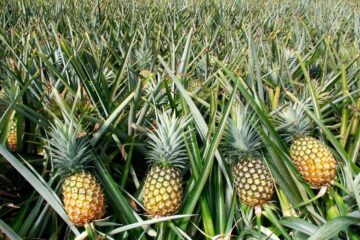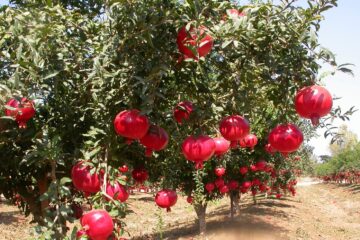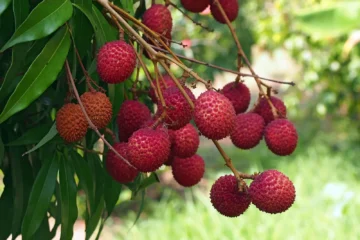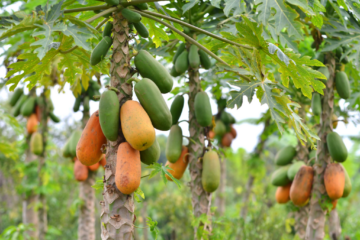Published: April 2020
Ulundu (black gram) and Green Gram (mung bean) are short-duration crops maturing in 60-75 days and are grown in almost all districts of Tamil Nadu except Chennai, Kanyakumari, and the Nilgiris. These crops are grown as sole crops in irrigated areas, as sole and intercrops in rainfed areas, and as paddy fallow crops in river-irrigated districts.
These crops play a crucial role in various crop rotation plans and farming systems in Tamil Nadu due to their short growing period, ability to fix atmospheric nitrogen, prevent soil erosion, and improve soil fertility. They also serve as fodder for livestock after harvest.
Ulundu and Green Gram are rich in protein (20-26%), carbohydrates (50-60%), and fat (1-1.5%), making them essential components of the daily diet.
Suitable Climatic Conditions
In Tamil Nadu, these crops are cultivated during the Chithirai season (April-May), Adi season (July-August), Purattasi season (September-October), and Thai season (January-February). They require 10-12 hours of sunlight per day and thrive in temperatures ranging from 20-35°C. Cloud cover and frost should be avoided. These crops can tolerate drought, making them suitable for areas receiving 650 mm or less annual rainfall.
Sowing Seasons and Varieties
Ulundu:
- Adi Season (June-August): T9, VBN 3, 4, 5, 7, CO 5, 6.
- Purattasi Season (September-November): VBN 3, 4, 5, 6, CO 6, Arupukottai 1.
- Margazhi and Thai Season (December-January): VBN 3, 4, 5, 6, CO 6, Tindivanam 1.
- Chithirai Season (April-May): T9, VBN 3, 4, ADT 5.
- Paddy Fallow (January): ADT 3, 5.
Green Gram:
- Adi Season (July-August): KM 2, CO 6, 7, 8, VBN 2, 3, Virinjipuram 1.
- Purattasi Season (September-November): CO 6, 7, 8, VBN 3, Virinjipuram 1.
- Margazhi Season (December-January): VBN 2, 3.
- Chithirai Season (April-May): CO 6, 7, 8.
- Paddy Fallow (January): ADT 3.
Seed Treatment
For sole cropping, 20 kg of seeds per hectare are required. For intercropping, 10 kg per hectare is sufficient. For paddy fallow, 25 kg per hectare is needed. Seeds should be treated to ensure high yield. Treat 1 kg of seeds with 2 grams of carbendazim or thiram fungicide. Alternatively, treat with 4 grams of Trichoderma viride or 10 grams of Pseudomonas fluorescens biological fungicides.
Rhizobium Seed Treatment
Next, treat the seeds with Rhizobium biofertilizer. Rhizobium treatment should be done immediately after treating with biological fungicides, as they are compatible. However, if chemical fungicides are used, wait 24 hours before treating with Rhizobium.
The Tamil Nadu Agricultural University has developed CRU 7 or PMB 47 Rhizobium for Ulundu and CRM 6 for Green Gram. Mix selected Rhizobium with phosphobacteria and PGPBR inoculants, dissolve in cooled rice gruel, and coat the seeds. Dry the seeds in the shade for half an hour before sowing.
To reduce micronutrient deficiencies, treat the seeds with micronutrients along with biofertilizers. For every kilogram of seeds, use 4 grams of zinc, 1 gram of molybdenum, and 0.5 grams of cobalt, mixed with biofertilizers.
Fertilizer Management
Apply superphosphate fertilizer to provide necessary sulfur. If DAP is used, supplement with gypsum to meet the sulfur requirement.
Sowing
In irrigated areas, sow at 30×10 cm spacing. In rainfed areas, sow at 25×10 cm spacing. For paddy fallow, sow the seeds 5-10 days before the paddy harvest. Ensure moderate moisture for seed germination.
Water Management
Ulundu and Green Gram can tolerate some drought but require irrigation in irrigated conditions. Apply life-saving irrigation after sowing and again on the third day. During the growing season, water every 7-10 days based on soil and weather conditions.
In areas with limited irrigation, water the plants during flowering and pod formation to avoid yield loss. If drought conditions prevail, spray the foliage with a 2% potassium chloride and 100 ppm boron solution. Avoid waterlogging at any stage.
Weed Management
Weed control is essential for Ulundu and Green Gram. Keep the fields weed-free for 4-5 weeks after sowing. Apply Pendimethalin herbicide at 3.3 liters per hectare mixed in 500 liters of water, using a knapsack sprayer three days after sowing. Irrigate immediately after herbicide application.
At 15-20 days after sowing, apply quizalofop-ethyl (400 ml per hectare) for grass weeds or imazethapyr (400 ml per hectare) for broadleaf weeds. If no herbicide is used, manually weed the fields at 15 and 35 days after sowing.
Foliar Nutrition
To enhance pod setting and seed quality, spray 40 mg NAA and 100 mg salicylic acid per liter of water at 625 liters per hectare during flowering and again 15 days later. Alternatively, spray 5 kg of biofertilizer per hectare during flowering or apply a 2% DAP solution (20 grams per liter of water) during flowering and again 15 days later.
Preparation of DAP Solution
For a hectare of pulse crop, prepare 625 liters of DAP solution. Dissolve 12.5 kg of DAP in 10 liters of water in a plastic bucket. Stir well to dissolve. The next day, filter the clear solution and dilute to 625 liters. Spray using a knapsack sprayer in the morning or evening.
Harvesting
When 90% of the pods are mature, cut the plants, dry them in the sun, and thresh by hand or machine. Dry the seeds to below 12% moisture and store in bags.
Dr. P. M. Shanmugam, Dr. V. Hariharasudan, Agricultural Education Institute, Kumilur – 621712, Trichy District











